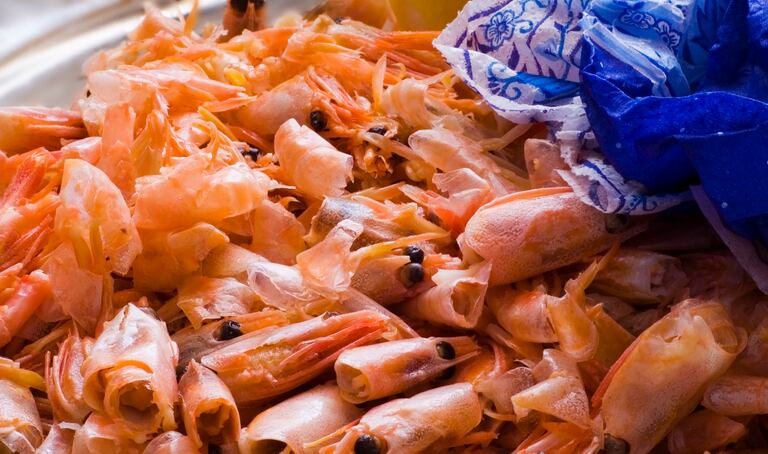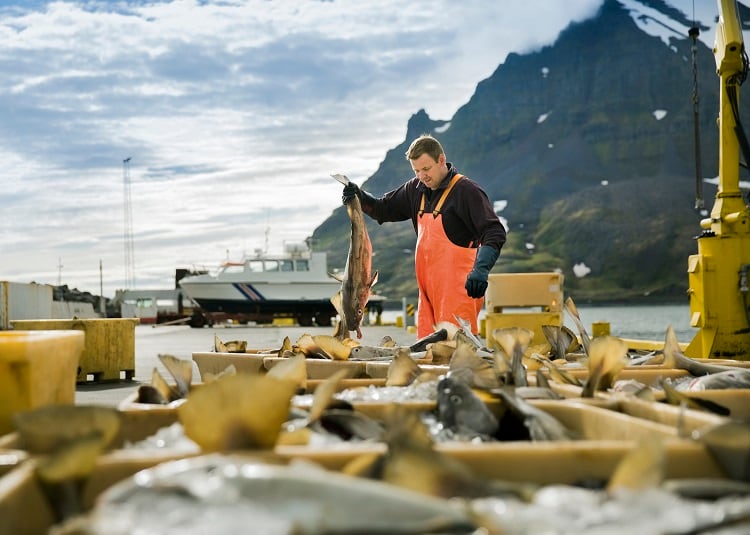Water covers 71% of the Earth’s surface – but currently only 4% of the food we consume comes from the sea. The growing global population and finite land-based resources could mean we turn increasingly to aquatic sources in the future.
But in a world where fish stocks and the marine environment are already under pressure from human activity, simply increasing our catch or raising fishing quotas would end in ecological disaster. So what is the solution to develop a sustainable blue bio-economy?
According to Hordur Kristinsson, chief science and innovation officer at Matis, a government owned food and biotech research institute, the answer is to put sustainability at the heart of development – something he claims the Icelandic seafood sector now does.
“In Iceland the blue bio-economy is our focus, this is our livelihood. Sustainability is at the core of things now at least, it didn’t used to be like that,” he said at an event organised by the European Institute of Innovation and Technology’s (EIT) Food KIC as part of London Food Tech Week. “There are areas where we do things sustainably and we don’t deplete the ocean.”
Nevertheless, from a global perspective, the seafood value chain is still highly inefficient. On average the EU fishing sector discard 20% of the biomass when fish are caught and processed. Fish heads, intestines, bones and skin are all discarded.
Yet more waste occurs at a consumer and retailer level, with as much as 35-40% of seafood products wasted at a consumer level, Kristinsson said.
“Food waste is a global problem for any commodity, any raw material. Seafood is definitely part of the problem.”
What is Iceland doing differently?
Kristinsson said that “up North” the industry is changing its practices in order to get as much as possible out of the raw material.
“It didn’t used to be like that. We used to have major catches coming in at the same time and then you didn’t have the capacity to process the fish,” he recalled. “This has completely changed these days thanks to the quota system, and we have developed ways to preserve the fish.”
The result has been an economic success story for Iceland’s fishing industry. For instance, in 1981 Icelandic fishermen landed 460,000 tonnes of cod generating revenue of US$495 million. By 2017, the sector was bringing in 252,800 tonnes but revenue had shot up to US$781 million.

“This is because of R&D,” the innovation chief argued. “We have all these side businesses around the industry to get significant value out of the by-products.”
The sector has spawned companies that produce supplements from trimmings, with fish peptides proven to lower blood pressure, inflammation and gastro intestinal problems. Fish skins are being used to produce an alternative leather and collagen products. Companies are developing extra virgin pressed fish oils. Fish intestines – not approved for use in food in the EU – are being used to develop enzymes, with products as unlikely as a mouth spray that shortens the length of a cold hitting the market.
“Who would have thought you would be spraying cod enzymes in your mouth to prevent cold?”
Unlocking the value of waste
All of this drives value, Thor Sigfusson, founder and chairman of the Iceland Ocean Cluster, said.
Taking fish skin as an example, the typical model sees a “best case scenario” where it is used in meal for animal feed – although frequently it still ends up in landfill. In Iceland, if it is turned into leather it is worth around $8-10 a kilo. If it is processed into collagen that rises to $18 per kilo. There is even a soda containing collagen from fish skin in Icelandic retail – and here the value rises to $30 per kilo, Sigfusson explained.
“We need to do more with less. In cod, the fillet is sold for $1. We can at least increase that value for cod five-fold in the next 10 years by

looking at the whole value chain.”
Typically, the higher up the food waste pyramid a by-product remains, the higher the value. So the development of 3D printed dishes for the high end restaurant sector is an exciting innovation, Kristinsson said.
Matis helped facilitate the development of 3D printed dishes utilising side-streams from the seafood industry. Working alongside the Icelandic national chef team, the program has developed “high-end restaurant products” using cod mince made from trimmings. “This is one way we can use IOT technology to create high value from by-products,” Kristinsson suggested, adding that changes ushered in by Industry 4.0 - the next wave of technological development - will unlock further opportunity.
How has this been achieved?
The Icelandic seafood sector had to re-invent old ways of working to develop new approaches to sustainability.
The Icelandic Ocean Cluster works to create value and discover new opportunities by connecting entrepreneurs, businesses and knowledge in the marine industries. However, Sigfusson said that it was initially difficult to gain acceptance of this cultural change, not least because seafood processors are working with raw materials that they are protective of. Collaboration did not come easily, he recalled.

But a paradigm change has been achieved. Since launching, the Icelandic Ocean Cluster has generated 31 start-up spin-offs that are all creating value from seafood side streams.
This has meant introducing a start-up culture to the seafood sector. The organisation has opened a “space” to incubate seafood start-ups and foster collaboration between the entire value chain, from fishermen to academics.
With high levels of innovation and support from government, the future looks bright for Iceland’s ambition to become a zero-waste seafood sector.
In July or August, a 4,000 metric tonne marine collagen plant will begin operation. Other areas that are likely to drive innovation are making the most of other by-products, such as shrimp shells, and investing in the development of seaweed and microalgae propositions.
“That is another underutilised resource we are trying to create value from… It is going to be a major industry,” Kristinsson predicted.




